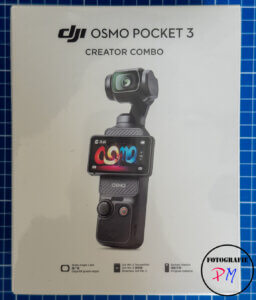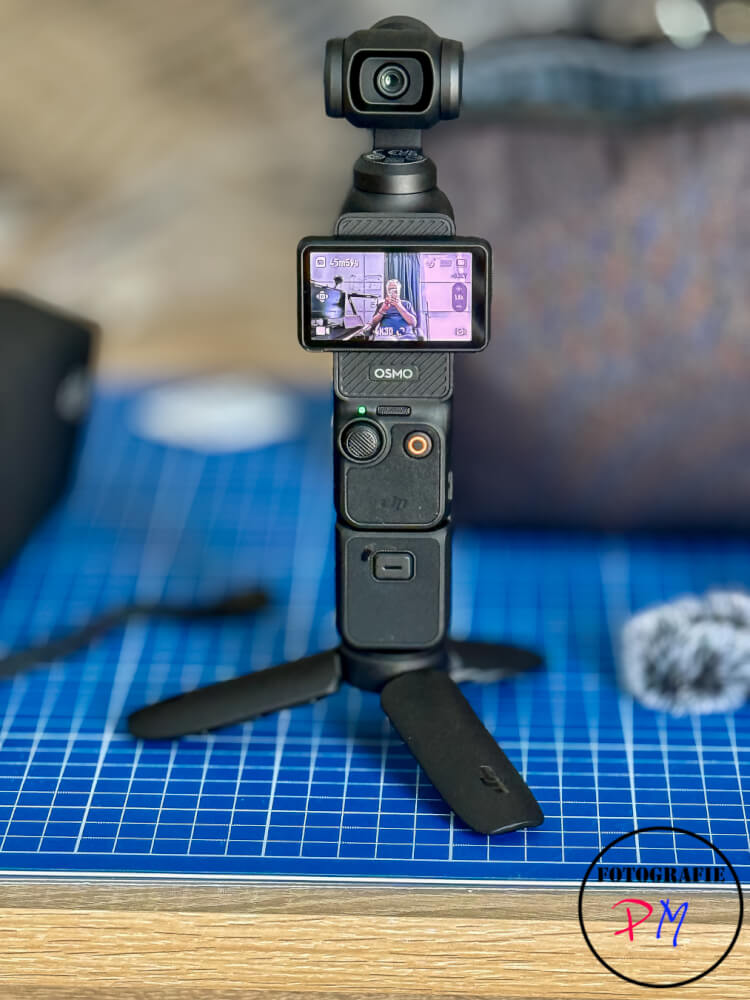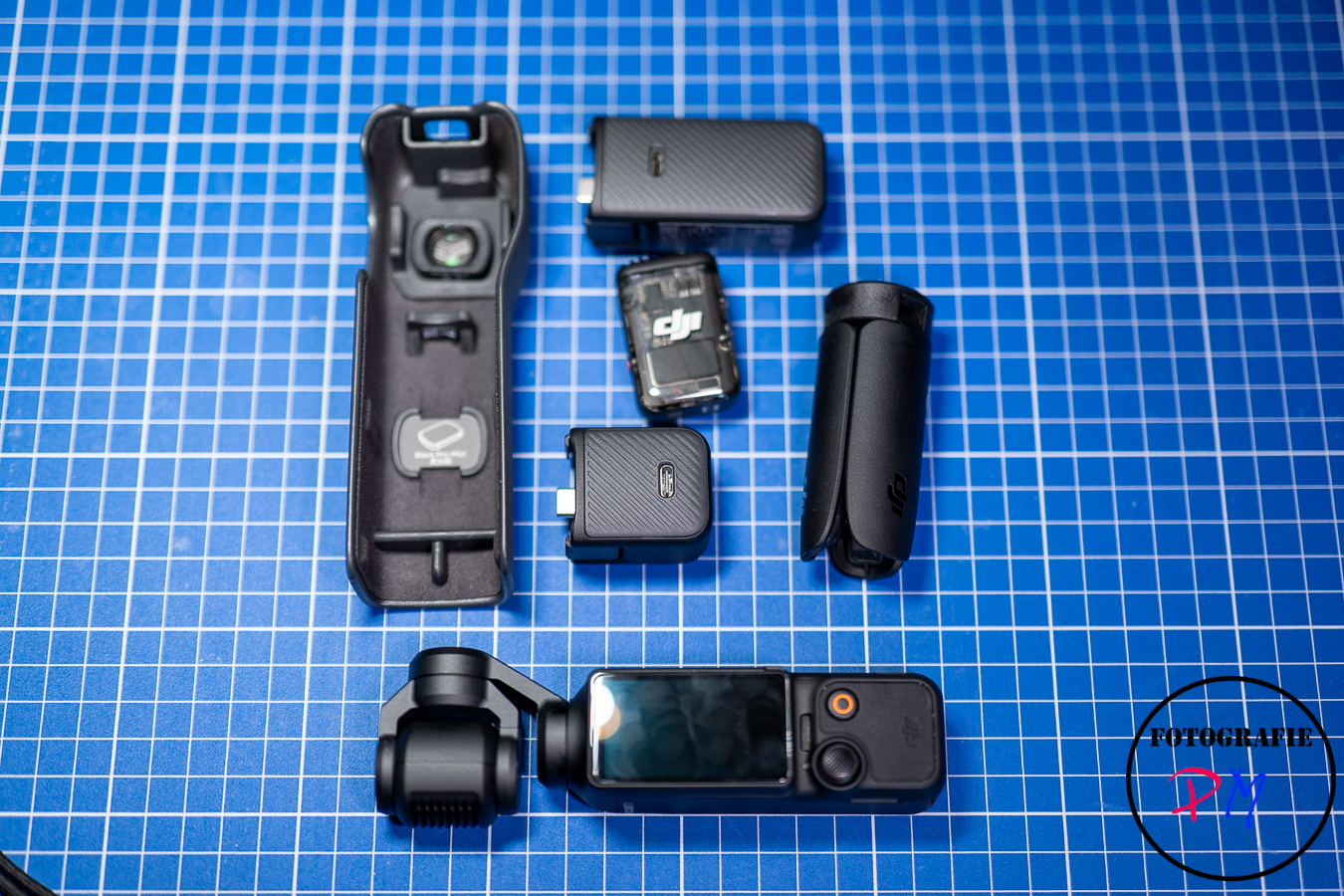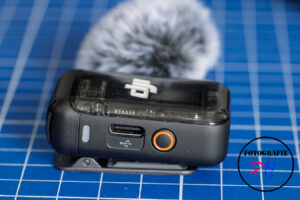DJI Osmo Pocket 3
Almost exactly four years after the DJI Pocket 2, which I reported on here, I’ve now purchased the DJI Osmo Pocket 3 as a Creator Combo.
Introduction
 Basically, everything has remained the same with the DJI Pocket 3, except for a few technical advances, especially in the video area, but also some setbacks in the photography area.
Basically, everything has remained the same with the DJI Pocket 3, except for a few technical advances, especially in the video area, but also some setbacks in the photography area.
Nevertheless, the new combo is very well suited, especially for video, and also offers some added value compared to the older version. However, the price of just under €680 isn’t exactly cheap, and until the Pocket 4 is released, the price is unlikely to change much.
Scope of Delivery
The DJI Pocket 3 Creator Combo consists of the device itself, an adapter grip that, among other things, provides a tripod thread, and an extension cable that, in addition to the tripod thread, also provides a kind of additional battery, which can then be used to charge the internal battery of the Pocket 3.
The battery’s storage capacity, at 1300 mAh, is slightly larger than before, but is certainly necessary due to the increased demands.
There’s also a pocket for all the accessories, a small folding tripod that I can screw into the tripod thread, and, importantly, a copy of the DJI Mic 2, which actually allows for excellent audio recordings.
Photography
Let’s start with the area that has suffered a setback. The old Pocket 2 still offered photo recordings in either JPEG or, in the so-called Pro mode, in DMG format at 16 megapixels, and in high-resolution mode, even at 64 megapixels. Unfortunately, the photos weren’t particularly sharp, and the 64 megapixel version was simply scaled up in some way.
In the new Pocket 3, the photo section has been somewhat neglected, as there are now only two modes: 16:9 with 3840 x 2160 pixels, i.e., this is a photo from a 4K video. There’s also a 1:1 format, but only 3072 × 3072 pixels, and, as before, the panorama, which consists of a total of nine images (3×3) or covers 180°.

Even though the resolution has been reduced, the quality of the images is, in my opinion, even slightly better despite the limited resolution. Of course, it can never replace a system camera, but the detail and overall sharpness are still very, very good, and with a little post-processing in Lightroom, such a photo can certainly be printed in a 40 × 50 format in exceptional cases.
Video Section

The Pocket 3 is, of course, primarily designed for video recording, either in so-called vlogging mode or normal mode. The built-in gimbal with various options helps to capture images or video clips without blur.
To secure the combination, we recommend one of the two extensions, either the one with the tripod thread or the extended battery, because without these two, the combination is almost too small to properly hold and operate.
The one-inch sensor and f/2.0 aperture even create a separation between the foreground and background. Of course, the background isn’t completely blurred, but a certain amount of blur is created, which benefits the images and video clips.
The Pocket 3 can record 4K video clips at up to 100 or 120 frames per second, depending on the system settings. That’s pretty decent for such a small camera.
The clips and photos are saved on a Micro SD card, and you should make sure that the Micro SD card you’re using is listed on DJI’s compatibility list.
I used a different, slower SanDisk SD card, which often caused problems even with regular 4K recordings at 30 frames per second because the video clips couldn’t be saved to the card fast enough.
Additional Recording Modes
Like its predecessor, the Pocket 3 also supports Hyperlapse and Motionlabs recordings, allowing you to capture a time-lapse, either without moving yourself or, as with Motionlabs, by additionally moving yourself along a path.
You can also save the recordings in DNG format; this requires some post-processing, but at least you have 4K resolution available. Just like its predecessor, the DJI Pocket 3 only generates Full HD videos from the camera itself.
Use as a Webcam
Thanks to the new firmware and the USB-C port, the DJI Pocket 3 can also be used as a webcam and, for example, in the OBS software, can provide an additional recording source.
This works naturally on both Windows and macOS.
Audio Recordings with the DJI Mic 2
The Pocket 3 has a total of three built-in microphones that you can use. The quality is quite decent, although in untreated indoor spaces, the sound will be picked up, which you’ll hear in contrast to dedicated microphones. But even that should work in emergencies.
Included in the DJI Creator Combo is a DJI Mic 2, which I can connect to the Osmo Pocket via Bluetooth.
When connected to the Pocket 3, there’s an audio meter at the top of the display that you can use to adjust the audio levels. Recording is then done in 24-bit wave format, which is then directly available as an additional track for the video clips.
The DJ iMac 2 is quite flexible, however, as it offers a TRS input for external microphones, so you can also work with a lavalier microphone, for example.
Much more interesting, however, is the option of configuring this DJI Mic 2 transmitter with the DJI Pocket 3 so that audio recordings are always saved as 32-bit float on the DJI Mic’s internal memory.
Firstly, this provides a backup of the audio recording and can be used if, for example, the audio track in the video clip is overdriven. This can be salvaged by using 32-bit float recording.
However, if the DJI Mac is configured so that audio is always saved to the internal memory, it can also be used independently of the DJI Pocket 3 as a mini field recorder, so to speak. I’ve done this several times when recording, for example, with a lavalier microphone and a regular system camera. I then only need to synchronize the audio tracks in post-production, which is no problem at all in Resolve.
DJI Mimo App
Of course, this Pocket version, like the Pocket 2 version back then, also has a corresponding app that allows you to control all of the device’s functions.
As criticized back then, the mandatory registration process remains, requiring you to create a DJI account, which seems more than excessive for a camera.
The app itself is easy and intuitive to use, can control all functions of the DJI Pocket 3, and of course, via a corresponding connection, you can also download files stored on the device to your phone, for example, from where you can then further edit them or, of course, share them.
Conclusion
The Pocket 3 is, of course, a logical development of the Pocket 2 and, of course, focuses on video. The photo section has been reduced in its features. Nevertheless, the images produced here are a good bit sharper. Despite the fact that it only uses just under eight megapixels, they are a good bit sharper, so you can even use the Pocket 3 for regular photo capture in an emergency.
ciao tuxoche




